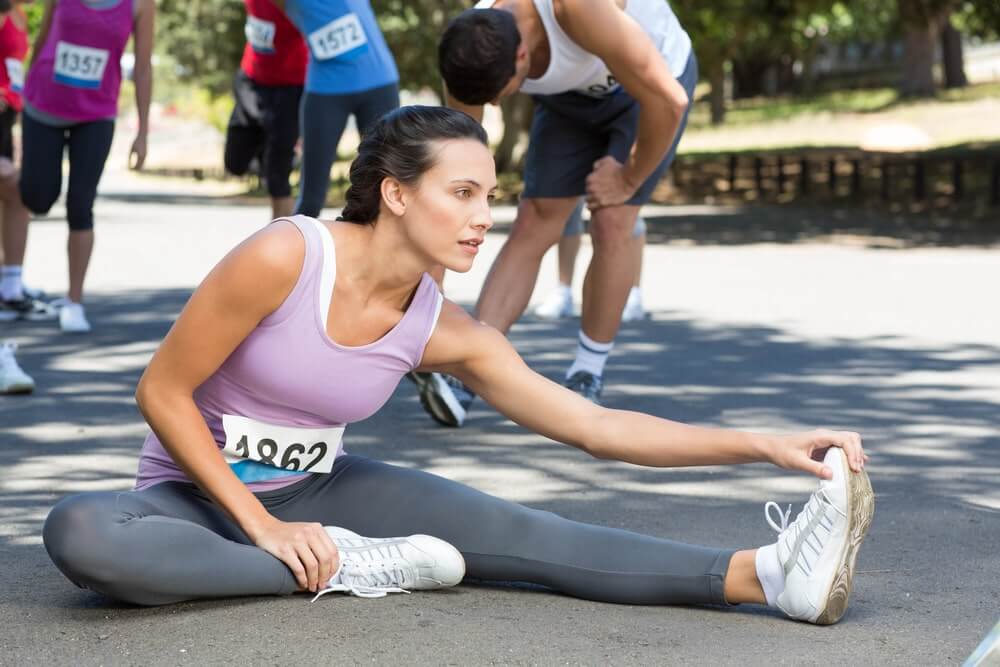Why do runners get side cramps? Side stitches occur when you take shallow, short breaths and your muscles aren’t receiving enough oxygen.
The first time I ever experienced a side stitch while running, I thought it meant that running wasn’t for me. However, I did some research and realized that side stitches are pretty common. Some causes include muscle spasms, parietal peritoneum irritation, chest breathing, spine stress, and overexerting yourself.
While side stitches are usually mild aches or cramps, they can sometimes feel like stabbing pain. How can runners avoid side cramps? Fortunately, these annoying little stitches can be avoided by following a few simple steps.
Contents
Side Stitches Explained
What is a side stitch? Side stitches are considered to be exercise-related transient abdominal pain (ETAP). In other words, side stitches are localized pain that you feel on the side of your midsection or abdomen.
A side stitch is a muscle spasm. According to one study, almost 66% of runners experience side stitches, so you’re not alone.
The Causes Of Side Cramps
While the experts don’t have a precise explanation as to why side stitches occur, there are a few different explanations for why runners get side stitches.
Parietal Peritoneum Irritation
A research study from 2015 has suggested that irritation of the parietal peritoneum can trigger side stitches. The parietal peritoneum is the thin membrane lining the pelvic cavities and abdomen.
It’s probably the phrenic nerve that causes a sensation in the parietal peritoneum. When this membrane is irritated by abdominal wall movements, pain in the phrenic nerve is often the result.
Muscle Spasms
Some experts believe that side stitches are caused by muscle spasms, particularly in the diaphragm.
The diaphragm is our body’s primary breathing muscle, and when we run, the diaphragm gets more work than it gets when sitting down at our desks.
If you ask the diaphragm to work harder, it will sometimes protest with a side stitch. When you run, the diaphragm will become stretched.
Stress On Your Spine
Another possible explanation for side stitches is that your body is experiencing stress on your spine when you’re running. When you run, the rotational and vertical components of the sport place increased stress on your body’s spinal column, resulting in a localized sharp side cramp.
More Side Cramp Causes
Besides the biological causes of side stitches, some risk factors increase the chances of experiencing side cramps.
Skipping Warmups

New runners are more likely to experience side stitches, and one of the risk factors is neglecting the warmup. If your core muscles are weak, you’re more likely to get side cramps.
You might also be interested in our explainer on is running on a treadmill bad for your knees.
Eating The Wrong Stuff

The worst thing you can do before a run is eating a heavy fat meal. This activates your body’s GI system so that the diaphragm will have less oxygen available. When the diaphragm doesn’t get the oxygen it needs, you’ll feel a muscle cramp in your side.
Another risk factor for getting side stitches is drinking high-sugar beverages less than an hour or two before your run.
Shifting Into High Gear Too Quickly
When you start running, you don’t want to break out immediately into a sprint. When you run too fast or too far when your body isn’t adequately adjusted places too high of a demand on your muscles and body.
Chest Breathing
Shallow breathing can contribute to side stitches. Be sure you’re taking belly breaths, which means breathing deep into your abdomen.
If you liked this post, our guide on why do runners lose toenails might also be helpful.
FAQs About Why Do Runners Get Side Cramps
Can I Keep Running With A Side Stitch?
While side stitches are uncomfortable, they are harmless. You can slow down until the side stitch goes away, but it’s safe if you feel like continuing your run.
Should I Stop Exercising If I Have A Side Stitch?
You can keep exercising when you have a side stitch because they’re harmless. However, if the pain continues, you may want to stop exercising to give your body a break.



